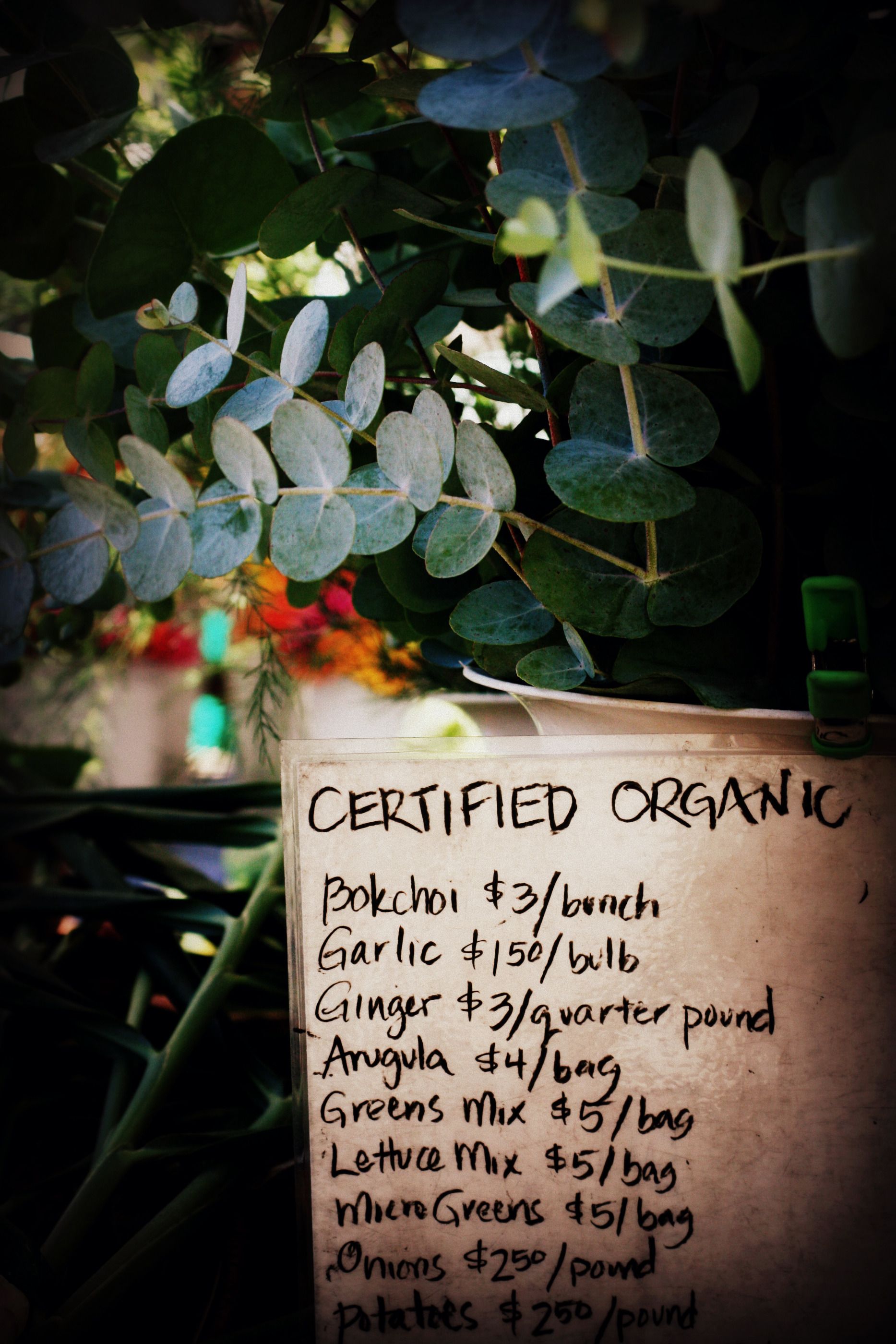How easy it is to become lost in the graceful charm of spring: the glint of early morning dew on newly-green blades of grass, the buds uncurling shyly from wind-tattered branches and the fragrance of deep brown earth settling into the air. At a time of year when nature is busy with growth and life after the restless stagnancy of the winter months, so too do we begin to feel reinvigorated and purposeful. Whether throwing open the windows and tidying up the house or chomping on detoxifying foods- spring is a natural time to refresh and clean. Awaken the spring within by taking a brisk walk in the sunshine and enjoying some of the delicate, bitter greens that start to fill baskets at farmers' markets at this transitional time of year. Discover the benefits of different types of seasonal greens and learn how to mix and match varieties to most completely energize your body this season.

Across dietary philosophies, greens are nearly unanimously revered for their health-giving properties. And it is really no wonder- lush with vitamins, minerals, fiber, powerful bioflavinoids and essentially non-caloric, greens are unassumingly nutrient dense. As a dietary foundation for many traditional foraging cultures, including regular amounts of vegetation in the diet is extremely helpful in optimizing digestion, providing hydration and delivering highly bioavailable nutrients and phytochemicals. As according to Nishanga Bliss, author of Real Food All Year, "Our systems run well when we munch on a steady supply of greens...All greens are healthy but not all are equally nutritious." Navigate the specifics of various types of greens by thinking about them in groups or families:
Cabbage (Brassica) Family
Members: cabbages, kale, broccoli, collard greens, watercress, kohlrabi, radishes, turnips, mustard greens, arugula.
Benefits: Rich with vitamin C, potassium, calcium, vitamin B6, biotin, magnesium, and manganese. These greens are also known for having a particularly beneficial phytochemical content including sulfuraphanes, which are known cancer-protectives.
Preparation: Members of the cabbage family naturally contain goitrogenic compounds- substances that have thyroid-suppressing effects. These are effectively reduced by cooking practices- especially through boiling. In many cultures that traditionally ate such greens, iodine-rich seafood was also common in the diet, offering a balanced thyroid-protective effect. Cabbages also lend themselves well to fermentation as they easily support the proliferating probiotic bacteria. If you've never tried fermentation before, try making a simple sauerkraut or kimchi. Learn more in Real Food Fermentation, a comprehensive, picture-loaded guide to all things fermented.
Amaranth (Amaranthaceae) Family
Members: spinach, chard, and beet greens
Benefits: Notable for a tender mouth feel and quick cooking, these greens tend to be high in vitamin K, chlorophyll, carotenes, vitamin C, natural folate, manganese, magnesium, iron, and vitamin B2.
Preparation: Foods in this family are high in oxalic acid, which binds to iron and calcium in both greens and the foods they are eaten alongside with. If you have ever discovered a gritty feeling on your teeth after eating raw spinach or chard, you have directly witnessed this effect. Lightly cook spinach and enjoy alongside dairy or other foods that are high in calcium to inactivate this bothersome component.
Lettuce Family
Members: romaine, iceberg/crisp head, butterhead (boston or bibb lettuce), red leaf, green leaf
Benefits: In general, the darker and stronger tasting the lettuce, the greater nutrient content. All lettuces contain chlorophyll and vitamin K, although romaine is the most robust with vitamin A, C, B1, B2, folic acid, manganese, and chromium found in its long leaves.
Preparation: Lettuce is best enjoyed raw. Commercial lettuce has high pesticide residue, so be sure to purchase organic and local whenever possible. Consult the Clean 15, Dirty Dozen when making choices about purchasing conventional produce.
Leafy Green Culinary Herbs
Members: parsley, cilantro, mint, basil.
Benefits: Herbs offer an incredible blend of nutrients and therapeutic compounds that give them both distinctive healing qualities and remarkable flavor. Each unique, they are a perfect example of where diet and medicine intersect in nature. Parsley, for example, contains beta carotene, vitamin c, folic acid, iron, magnesium, calcium, potassium and zinc as well as volatile oils such as myristicin and flavinoids that are antioxidants. Cilantro is a powerful detoxifier and antimicrobial that also contains calcium, iron, carotonese and vitamin C.
Preparation: Fresh herbs are preferable for superior nutrient content. Starting a small windowsill herb garden is a great way to refresh your cooking and your spirits. When using dried herbs, be sure to obtain from a reputable source as many store bought varieties contain MSG and preservatives, even when not marked.
Wild Weeds
Members: Dandelion leaf, chickweed, miner’s lettuce, sorrell, nettles, purslane, nasturtium leaves.
Benefits: Higher in nutrients than domesticated relatives, wild weeds are often hearty plants that offer a spicy or bitter taste. Dandelion leaf is a known liver detoxifier while purslane is particularly high in anti-inflammatory omega-3 fatty acids. Bitters act as a digestive aid and appetite stabilizer by stimulating the gallbladder to release bile which eases the digestion of fats and proteins.
Preparation: If properly trained, carefully forage for your own in a clean space away from roads. Enjoy freshly picked or dried into teas.
Recipe: Spinach with Sprouted Pine Nuts
As the hearty cooking greens of cooler months give way to the delicate young leafy greens of the spring, it is time to adjust preparation methods to enjoying more raw foods, or to cook by lightly steaming and sautéing. Here is a recipe for spinach and pine nuts sautéed in unrefined olive oil, to create an effortless and flavorful side.
Ingredients:
8 oz. fresh baby spinach
1/4 cup unrefined olive oil
1-2 cloves of garlic sliced into slivers
1/4 cup soaked and sprouted pine nuts
salt and pepper to taste
1-2 TBS organic goji berries or organic golden raisins (optional)
Lightly steam 8 ounces of spinach for 2-3 minutes until slightly reduced. Drain well and set aside.
In a large frying pan, heat to medium heat and add 1/4 cup Bariani olive oil, sliced garlic and pine nuts. Saute until golden. Be sure not to overcook, as it will make garlic bitter. Add drained spinach and toss to coat. Garnish with organic goji berries or golden raisins if desired.
Curious about learning how to eat with the seasons? Check out this beautifully written, simple-to-follow guide.

